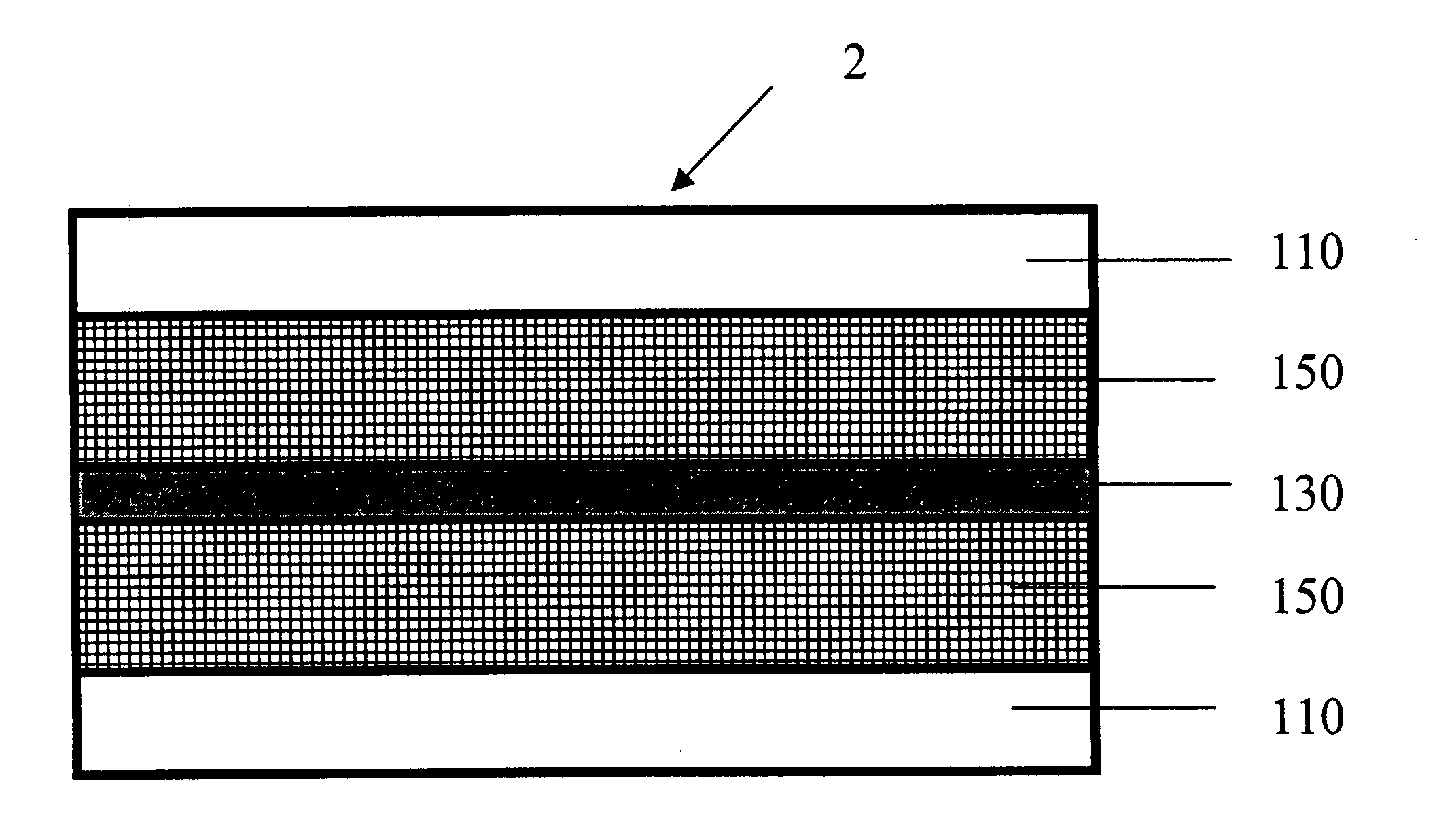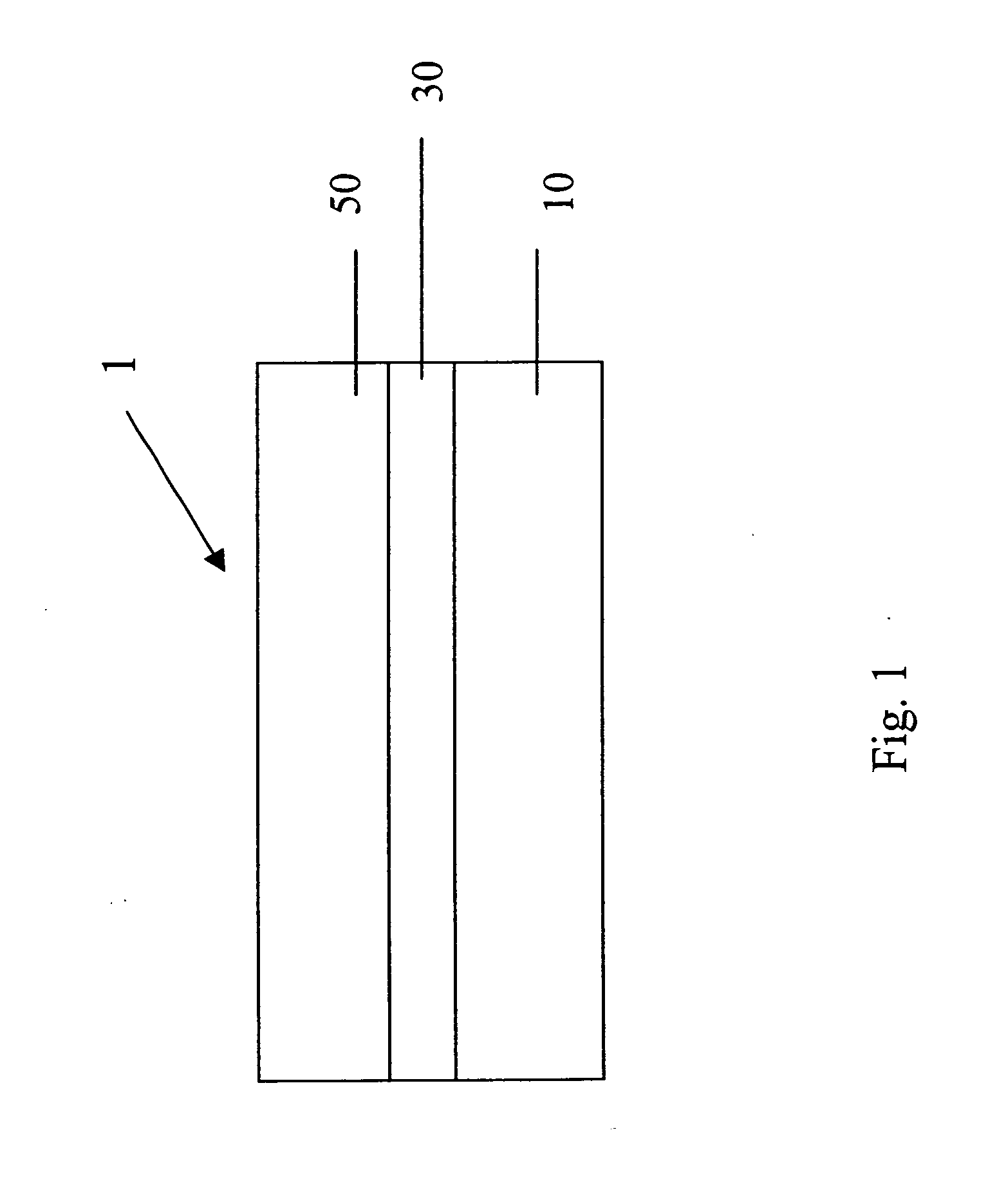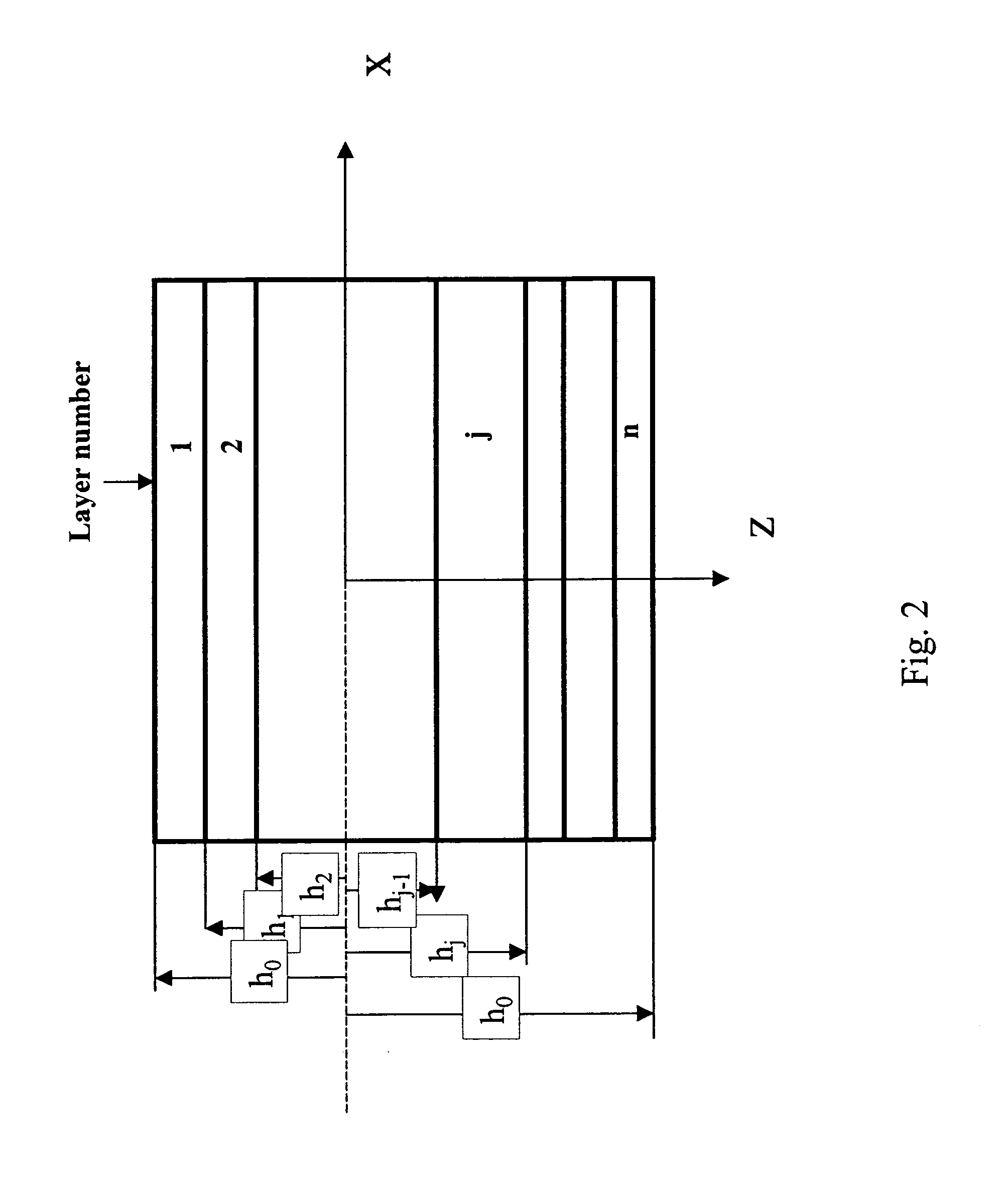Display element stress free at the critical layer
a technology of stress-free and critical layer, applied in the field of flexible organic lightemitting diodes (oled) and liquid crystal displays, can solve the problems of changing the thickness of the crystal layer, affecting the natural flexibility of the plastic substrate, and affecting the display effect, so as to avoid stress-induced damage and failure of the display
- Summary
- Abstract
- Description
- Claims
- Application Information
AI Technical Summary
Benefits of technology
Problems solved by technology
Method used
Image
Examples
Embodiment Construction
[0024] Referring to FIG. 1, embodiment 1 of the present invention consists of a substrate 10, a flexible light-emitting module 30 which includes light-emitting material, an anode, and a cathode (not shown), and a superstrate 50. These layers are described in detail below.
[0025] Note that the substrate may alternatively be located adjacent to the cathode, or the substrate may actually constitute the anode or cathode. The flexible light-emitting module may contain organic layers and other layers such as a hole-injecting layer, a hole-transporting layer, and electron-transporting layer. The total combined thickness of the organic layers is typically less than 500 nm as disclosed in U.S. Pat. No. 6,771,021.
[0026] Flexible displays are made of multilayered thin films. These film layers have different thickness, thermal / moisture expansion coefficients and thermal shrinkage behavior that results in deflection and bending stress due to temperature changes. The deflection and stress can af...
PUM
 Login to View More
Login to View More Abstract
Description
Claims
Application Information
 Login to View More
Login to View More - R&D
- Intellectual Property
- Life Sciences
- Materials
- Tech Scout
- Unparalleled Data Quality
- Higher Quality Content
- 60% Fewer Hallucinations
Browse by: Latest US Patents, China's latest patents, Technical Efficacy Thesaurus, Application Domain, Technology Topic, Popular Technical Reports.
© 2025 PatSnap. All rights reserved.Legal|Privacy policy|Modern Slavery Act Transparency Statement|Sitemap|About US| Contact US: help@patsnap.com



